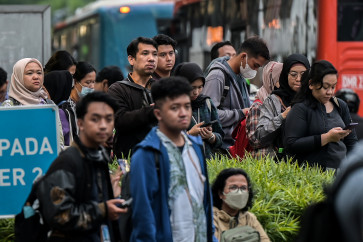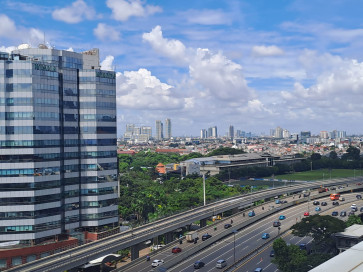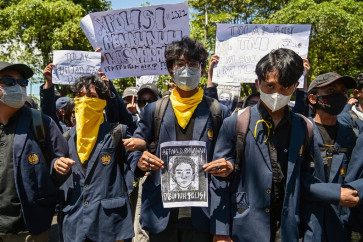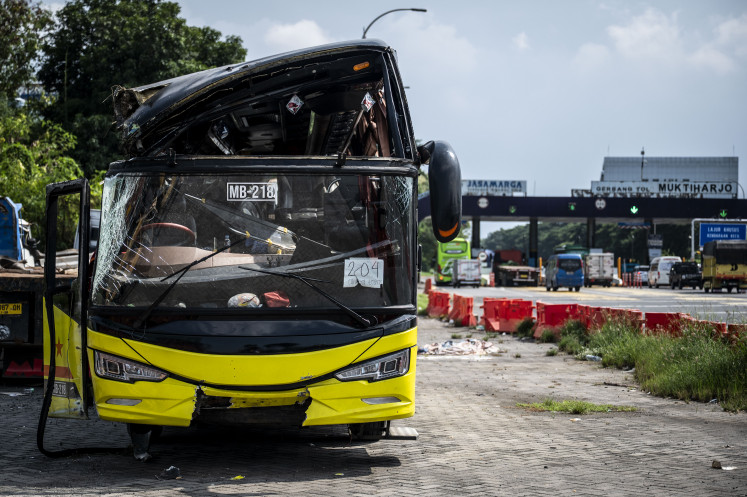Popular Reads
Top Results
Can't find what you're looking for?
View all search resultsPopular Reads
Top Results
Can't find what you're looking for?
View all search resultsIndonesia’s fiscal trap: Four pillars of a coming crisis
While the official spin on debt and deficit ratios sound reassuring, the reality is that state revenues are shrinking, debt service is rising and institutions are bending under political pressure.
Change text size
Gift Premium Articles
to Anyone
 Women surround a child connected to an intravenous drip on Sept. 23, 2025, during a mass treatment of students suffering from food poisoning at the Cipongkor District Office in West Bandung regency, West Java. According to official data, 352 students and parents were diagnosed with food poisoning, likely from consuming food provided via the free nutritious meal program the previous day. (Antara/Abdan Syakura)
Women surround a child connected to an intravenous drip on Sept. 23, 2025, during a mass treatment of students suffering from food poisoning at the Cipongkor District Office in West Bandung regency, West Java. According to official data, 352 students and parents were diagnosed with food poisoning, likely from consuming food provided via the free nutritious meal program the previous day. (Antara/Abdan Syakura)
F
inance Minister Purbaya Yudhi Sadewa addressed his first “APBN Kita” (our state budget) press conference with a calm message: The state budget deficit through August 2025 was just Rp 322 trillion (US$19 billion), or 1.4 percent of gross domestic product (GDP), comfortably below the 3 percent ceiling.
These figures emit the familiar green glow Indonesian officials love to showcase: Fiscal discipline is maintained, constitutional limits are respected and economic management is on track. Yet beneath the surface, the numbers reveal a darker reality.
State revenues by August reached only Rp 1.639 quadrillion, just 57 percent of the annual target and down 7.8 percent year-on-year (yoy). Nearly every revenue stream is shrinking, with tax receipts falling and nontax revenues plunging. Meanwhile spending is rising, and each budget cycle increasingly borrows to service yesterday’s debt rather than fund tomorrow’s growth.
Behind the headline GDP growth of 5.12 percent lays a severe fiscal warning sign: Indonesia’s tax-to-GDP ratio has collapsed to its lowest point in decades.
The most revealing number is buried in the 2026 budget plan: Nearly 77 percent of all new borrowing next year will go not to schools, roads or factories, but simply to pay interest on old debt. This is no longer fiscal policy; it is a dangerous spiral where today’s borrowing funds yesterday’s mistakes, not tomorrow’s growth.
Each budget cycle deepens the trap, crowding out productive investment. The four-pillar vulnerability framework of the International Monetary Fund, designed after past crises to spot fiscal stress, highlights four risks: misstated fiscal stance, shock exposure, sustainability and institutional weakness.
Applied to Indonesia's current trajectory, the framework reveals not the picture of health portrayed in official communications, but a state methodically constructing the architecture of its next crisis.


















